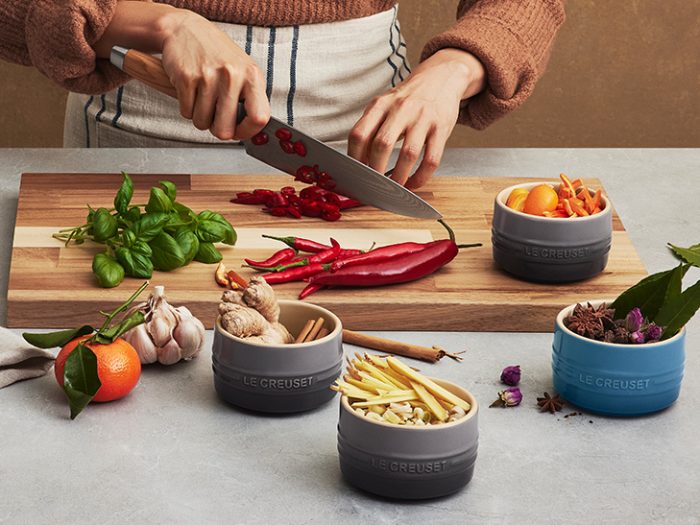
Knives are indispensable tools in every kitchen, allowing us to create delicious meals with precision and ease. However, these sharp instruments can also pose a risk if not handled with care and caution. To ensure a safe and enjoyable cooking experience, follow these top 10 knife safety tips for home cooks and chefs, which will help you maintain a secure and confident environment in your kitchen.
Choose the Right Knife for the Task
Selecting the appropriate knife for each task is crucial in reducing the risk of injury. Invest in a well-rounded set of knives, including a chef’s knife, paring knife, bread knife, carving knife, and utility knife. Each knife has a specific purpose, allowing you to work more efficiently and safely. A well-rounded set of knives ensures that you have the right tool for every cutting task, reducing the need for improvisation and minimizing the risk of accidents.
Maintain Your Knives Properly
Regularly sharpening your knives using a honing rod and sharpening stone will help maintain their edge, making them safer to use. Sharp knives require less force to cut through ingredients, reducing the likelihood of slips and accidents. Additionally, it is essential to clean and dry your knives thoroughly after each use to prevent rust and damage to the blade. Properly maintained knives will last longer and perform better, ensuring a safer and more efficient cooking experience.
Handle Knives with Care
Always hold the knife by the handle, not the blade, and keep your fingers and thumb tucked away from the cutting edge. Use the “claw grip” when holding food items to protect your fingers while cutting. Never use a knife as a can opener, screwdriver, or pry bar, as this can damage the blade and increase the risk of injury. Lastly, avoid leaving knives in the sink or dishwasher, where they can become hidden hazards. Keeping your knives in good condition and using them correctly will help prevent accidents and promote a safer cooking environment.
Practice Safe Cutting Techniques
Using a stable cutting board and a sharp knife will ensure smooth, controlled cuts. Focus on the task at hand and avoid distractions while cutting. Always cut away from your body, never towards it, to minimize the risk of injury. Additionally, the “bridge and claw” technique can help keep your fingers and hand out of the path of the blade. Safe cutting techniques not only protect you and your family but also help you work more efficiently in the kitchen.
Store Knives Safely
Store your knives in a designated area, such as a knife block or magnetic strip, to prevent them from becoming loose in drawers. Use knife guards to protect the edges and reduce the risk of injury during storage. Keep your knife storage area away from high-traffic areas to avoid accidents and maintain a clutter-free workspace. Safe storage practices will help you locate your knives quickly and prevent them from becoming hidden hazards in your kitchen.
By following these top 10 knife safety tips, you can ensure a safe and confident cooking experience in your kitchen. Remember, investing in high-quality knives, maintaining them properly, and practicing safe handling techniques will not only protect you and your family but also enhance your culinary skills. Stay safe, stay sharp, and enjoy your time in the kitchen!

